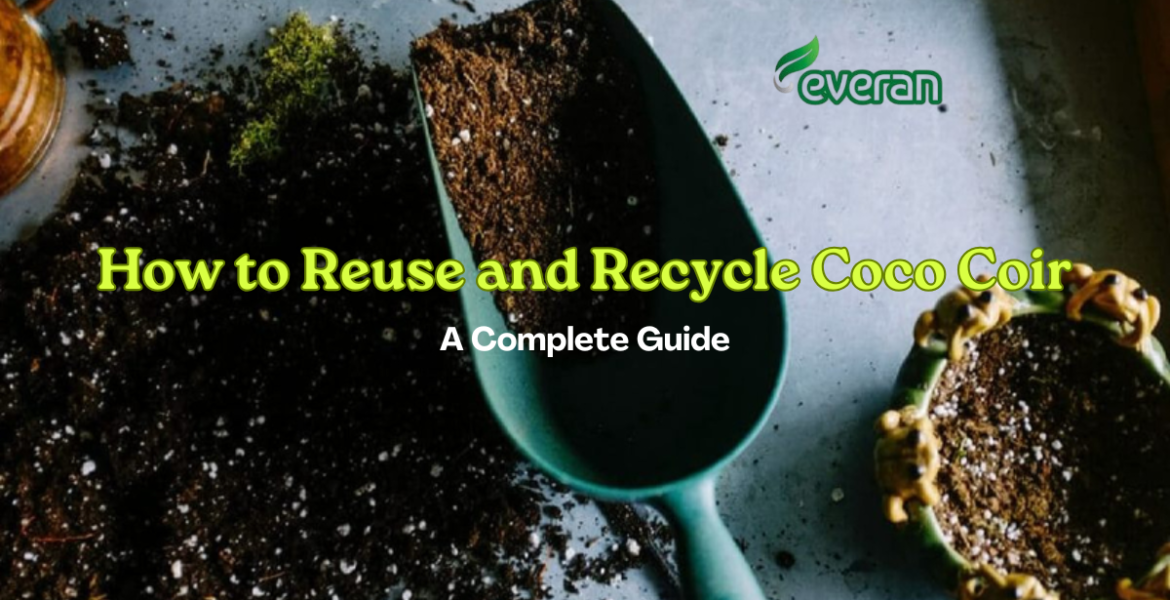One of the biggest advantages of coco coir is its ability to be reused and recycled. Unlike many soil additives that break down quickly, coco coir can support multiple growing cycles when handled properly. For gardeners across the USA who want to save money while practicing eco-friendly gardening, reuse coco coir is a smart and sustainable choice. In this guide, we’ll walk you through everything you need to know about reuse and recycle coco coir so you can get the most out of this versatile growing medium.
Why Reuse Coco Coir?
Coco coir is made from the fibrous husks of coconuts—a natural, renewable byproduct of the coconut industry. It’s known for:
-
Excellent water retention and drainage
-
Neutral pH balance (5.5–6.8)
-
Strong aeration for roots
-
Longevity compared to other soil amendments
Since it doesn’t break down immediately, coco coir remains effective for 2–3 growing cycles when properly cleaned and treated. This not only reduces waste but also makes it more cost-effective.
Step 1: Collect Used Coco Coir
After harvesting your plants, carefully separate the old coco coir from the roots. Shake off as much debris as possible. Avoid letting it sit for too long, as damp coco coir can attract mold if left untreated.
Step 2: Remove Old Roots and Debris
Used coco coir often contains leftover roots and plant matter. These need to be removed to avoid fungal growth and nutrient imbalances. You can do this by:
-
Hand-picking large root clumps
-
Using a fine mesh screen to sift the coir
-
Rinsing with water to loosen debris
Step 3: Wash Thoroughly
Coco coir can accumulate salts and leftover nutrients from fertilizers. To reuse it, wash it thoroughly with clean water until the runoff is clear. Some gardeners also use a calcium-magnesium supplement to restore balance, since coco naturally binds calcium and magnesium.
Step 4: Sterilize for Safe Reuse
Sterilizing coco coir prevents diseases and pests from carrying over to your next crop. You can sterilize by:
-
Hot water method: Soak coco coir in hot water (above 150°F) for 10–15 minutes.
-
Solarization: Spread it in a thin layer under direct sunlight for a few hours.
-
Hydrogen peroxide rinse: Use a diluted solution to disinfect.
Step 5: Recharge with Nutrients
Since coco coir doesn’t naturally contain nutrients, it must be recharged before reuse. Mix in a fresh nutrient solution or organic fertilizers to restore its growing power. For hydroponic gardeners, pre-soaking the coir in a nutrient mix is especially effective.
Recycling Coco Coir in Other Ways
Even after 2–3 cycles, coco coir may lose its structure for direct plant use. But that doesn’t mean it should be thrown away. Here are some great ways to recycle old coir:
-
Composting – Add used coir to your compost pile. It breaks down naturally and helps balance moisture.
-
Mulching – Spread coir on top of garden beds to retain soil moisture and prevent weeds.
-
Soil Amendment – Mix it into clay-heavy soil to improve aeration and drainage.
-
Pet Bedding – Clean, dry coir can be used as bedding for reptiles, rabbits, and other small pets.
-
Seed Starting Mix – Blend old coir with fresh material for a lightweight seed-starting medium.
Tips for Extending Coco Coir’s Life
-
Avoid over-fertilizing, which causes salt buildup.
-
Rinse coir regularly during use to flush excess nutrients.
-
Store leftover coir in a cool, dry place when not in use.
Final Thoughts
Reusing and recycling coco coir is an excellent way to save money, reduce waste, and support sustainable gardening practices. With proper cleaning, sterilization, and recharging, coco coir can serve multiple growing cycles and still remain useful in your garden after its prime.
At Factory’s Depot, we provide premium coco coir products across the USA, making it easy for gardeners to grow sustainably while keeping their plants healthy and thriving.

